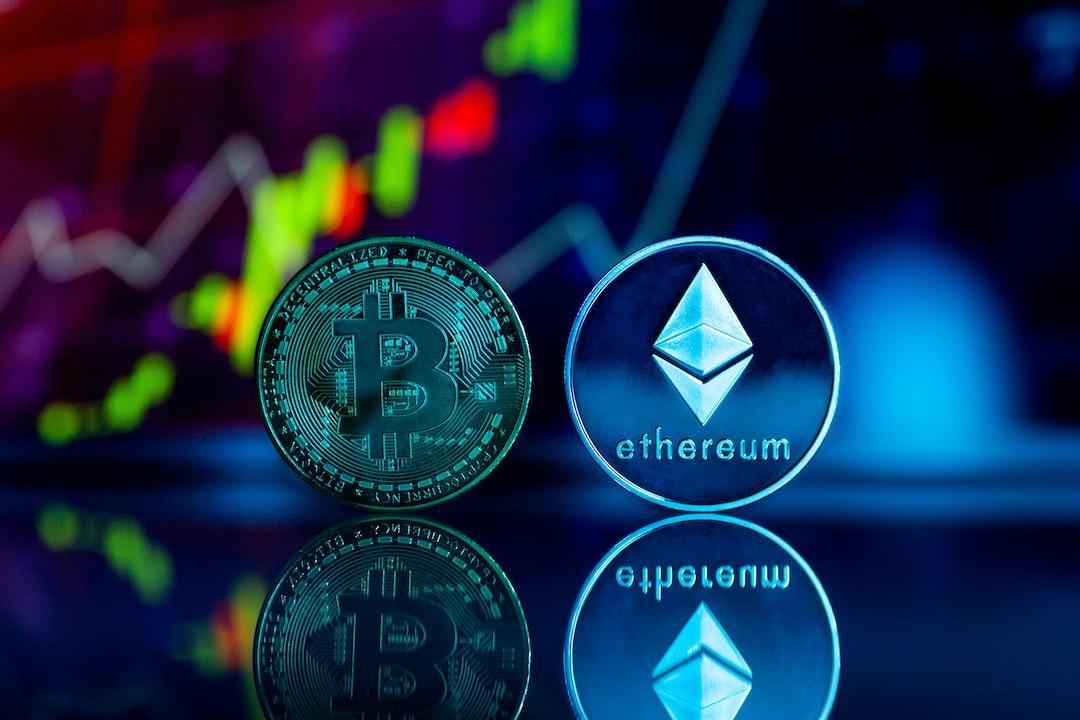With the complete development of Bitcoin Layer 2 narrative, the previously relatively “static” Bitcoin ecosystem has gradually become active, and the importance of liquidity has become increasingly prominent. In order to meet the urgent need of a large number of traders for Bitcoin yield and promote efficient liquidity allocation, many liquidity staking protocols in the Bitcoin ecosystem have emerged in this context.
(Previous summary:
MerlinSwap raised nearly “500 million US dollars” to refresh the IDO record! 24-hour TVL exceeded 100 million magnesium, and the trading volume was 70 million magnesium.
)
(Background supplement:
Community frenzy》What is the “Influpia” that Merlin exploded? How does Palu mine, trade, and token economy explain?
)
Table of Contents
Solv Protocol
Project Overview
Team and Financing
Core Mechanism
How SolvBTC can have the best of both worlds
SolvBTC: M-BTC = 1:1
DeFi Protocol Lego Module
StakeStone
Project Overview
Financing Situation
Core Mechanism
StakeStone and BTC Ecosystem
STONE and mSTONEBTC
BTC Ecosystem Acceleration Plan
Avalon Finance
Project Overview
Team and Financing
Core Mechanism
Code Audit
Avalon Lego Combination
Staking Tutorial
Together with the top-tier Layer 2 Merlin Chain in the Bitcoin ecosystem, emerging staking protocols such as Solv Protocol, Avalon Finance, and StakeStone have introduced the concept of earning Bitcoin and combined it with the traditional liquidity staking concept, providing investors in the Bitcoin ecosystem with a new investment experience.
This article will introduce the core mechanisms and staking gameplay of Solv Protocol, StakeStone, and Avalon Finance, and how they can benefit from each other in the Merlin ecosystem.
Solv Protocol is a proprietary full-chain yield protocol in the Bitcoin ecosystem, comparable to the Ethereum ecosystem’s staking protocol Lido. By converting idle underlying assets into yield assets, it promotes cross-protocol and cross-ecosystem free combination to create a more efficient liquidity allocation method.
SolvBTC is the first full-chain Bitcoin yield asset issued by Solv Protocol. It is essentially an ERC-20 token with substantial liquidity. Users can earn safe yield by staking their idle assets in their wallets. Currently, SolvBTC has been launched on Arbitrum, BNB, and Merlin Chain.
Currently, Solv Protocol’s TVL has exceeded $200 million, with a total number of users exceeding 55,000, and has generated $7.03 million in earnings for users.
Team Background
The Solv team brings together experienced professionals from various backgrounds, including experts from traditional financial institutions such as Goldman Sachs and JPMorgan, product managers from Binance and OKX, and other influential figures in the cryptocurrency field. In addition to Solv Protocol itself, the team has also established the SFT (Semi-Fungible Token) token standard ERC-3525 and attracted more than 100 teams to build new products based on this standard.
Financing Situation
Solv Protocol’s investors include well-known institutions such as Binance Labs, NOMURA Group, Mirana, and Blockchain Capital, raising a total of $14 million in the previous round of financing.

With a decentralized asset management structure, a DAO-centric coin selection mechanism, non-custodial asset operation process, and a strictly monitored risk management framework, Solv Protocol provides strategy-based native income streams for mainstream assets such as BTC, ETH, and stablecoins.

1. Decentralized asset management structure: Solv’s structure supports the entire asset lifecycle, including establishment, issuance, redemption, and risk control. The asset management framework consists of trading strategy vaults, built-in Safe Guardian, price oracle, and liquidity strategy-driven tokens.
Trading strategy vaults: Used to store funds and LP assets and execute asset allocation. Since its core design concept is to eliminate counterparty risk while ensuring the efficiency of liquidity pool operation, Solv predefined the types of transactions allowed in the contract, excluding any behavior that may involve fund abuse.
Built-in Safe Guardian: Sets independent execution mechanisms based on different vault trading strategies and only allows multi-signature wallets within a specified range. When users perform multi-signature operations, the checkTransaction will be called to check if it complies with the authorized rules.
Price Oracle: Acts as a bridge between Solv and other DeFi protocols, mainly used for retrieving and calculating asset net worth, setting achievable prices for DeFi protocols, and executing lending, trading, and other operations.
Liquidity strategy-driven tokens (vault LP tokens): Liquidity strategy-driven tokens convert staked assets into liquid and tradable assets, similar to the ERC-20 standard, to ensure the maximum composability and utility within the DeFi ecosystem. Therefore, vault LP tokens such as SolvUSD and SolvBTC can be integrated and interact with other DeFi components (such as money markets, DEXs, LPD-driven stablecoins, etc.).
2. DAO-centric coin selection mechanism: SolvBTC, SolvETH, and SolvUSD require high-quality underlying portfolios with stable risk-return characteristics. Therefore, Solv chooses to execute the asset selection process through the decentralized autonomous community Solv DAO. Currently, Solv DAO is supervised by the Advisory Council and will transition to a user-funded SOLV governance model after the Solv TGE.
3. Non-custodial asset operation process: Solv provides on-chain asset sovereignty for investors and establishes a trustless standard through smart contracts to reduce malicious risks. Smart contract upgrades require joint control with Solv partners through multi-signature addresses and TimeLock mechanisms.
4. Strictly monitored risk management framework: Solv sets a predefined stop loss threshold for each strategy. In addition, Solv will introduce a 24-hour monitoring system in the later stage to track portfolio delta. Once a deviation or crisis occurs, the system will take automatic action.
Code Audit
Solv’s code has been audited by well-known security companies such as Quantstamp, Certik, Slowmist, Salus, and SecBit, and the audit reports have been made public.
SolvBTC will become the liquidity strategy token (LST) on Merlin Chain, and users can mint M-BTC by staking SolvBTC at a 1:1 ratio. The M-BTC cannot be redeemed until June. After the lock-up period ends, it can be exchanged back to M-BTC at a 1:1 ratio. Since M-BTC can be exchanged back to BTC at any time at a 1:1 ratio after the end of the Merlin Seal staking, staking for SolvBTC essentially achieves risk-free returns in terms of the cryptocurrency.
The earnings of SolvBTC come from a combination of multiple market-neutral trading strategies, including Perp DEX market-making earnings, funding rates neutral escape strategies, etc., ensuring stable earnings while minimizing the impact of market price fluctuations.
Since the Merlin ecosystem is still in its early stages of development, the BTC staked at the moment will be locked in the Vault to avoid anchor risk until redemption is opened in June. During the lock-up period, users can earn Solv points and obtain multiple staking rewards through a series of DeFi combinations in the Merlin Eco. The following is a simplified process for exchanging SolvBTC:
Step 0: Cross-chain Layer 1 BTC to Merlin Chain and then exchange it for MBTC on MerlinSwap, with a slight discount.
Step 1: Deposit MBTC into Solv to receive stable Merlin POS staking yields.
Step 2: In addition, Solv staking will also receive a token airdrop, but the specific rules and token airdrop ratio have not been announced by Solv officials at the moment.
As an ERC-20 token, SolvBTC can be combined with other DeFi protocols as an important “Lego block”.
Step 3: The Solv point system is only related to staking and minting, so the ownership of SolvBTC does not affect the staking points. Therefore, users can earn more earnings through various DeFi protocols that are compatible with Solv.

According to the official Merlin Chain application panorama released by Solv Protocol, Solv has cooperated with top-tier DeFi products on Merlin Chain such as MerlinSwap, bitSmiley, Surf Protocol, Mage Finance, Avalon Finance, etc., and the guide to benefiting from multiple projects is as follows:
MerlinSwap (DEX): MerlinSwap will list the SolvBTC-M-BTC trading pair for traders to freely trade. MerlinSwap is a DEX supported by the iZUMi Finance team and officially launched in collaboration with the MerlinChain. It is committed to creating a convenient and fast DeFi interaction experience for the Bitcoin ecosystem by leveraging the stability of the Bitcoin ecosystem and the interoperability of Merlin EVM. As of the end of March, MerlinSwap’s TVL has exceeded $100 million, and the highest daily trading volume has reached $70 million, making it the largest DEX in the Merlin ecosystem and even the Bitcoin ecosystem.
bitSmiley (StableCoin): Stake SolvBTC to mint bitUSD (stablecoin). bitSmiley is a native Bitcoin stablecoin protocol that allows users to over-collateralize native BTC on the Bitcoin network to mint bitUSD stablecoins. In addition, bitSmiley has also launched lending and derivative protocols to reshape the BTCFi ecosystem. bitSmiley was selected as a high-quality project in the Bitcoin hackathon co-hosted by ABCDE and OKX Ventures in November last year and received investments from ABCDE and OKX Ventures at the end of the year.
Surf Protocol (Perp DEX): Open positions by staking SolvBTC. Surf Protocol is a perpetual contract DEX on Bitcoin Layer 2 and was previously selected for the seventh season of the Binance Labs MVB Accelerator Program. The Surf Protocol testnet ended on March 26, with a total of 30,000 wallet addresses participating in the testnet and a total trading volume of $250 million. The mainnet will be launched soon.
Mage Finance & Avalon Finance (Lending Protocol): Collateralize SolvBTC for borrowing.
Mage Finance is the first Bitcoin lending infrastructure built on Merlin Chain.
Avalon is a DeFi platform on Bitcoin Layer 2 and has been launched on Merlin Chain.
MerlinStarter & UniCross (LaunchPad): SolvBTCIDO Participation Certificate for the Future
Merlin Starter is the first Launchpad platform of Merlin Eco, aimed at incubating native projects of Merlin Eco and providing asset support for promising projects.
UniCross is a cross-chain BTC token minting platform on Layer 2 networks. It allows users to mint Layer 1 BRC-20 tokens on Layer 2 and supports multi-chain asset payments such as BRC-20, BTC, and ETH. The stTokens obtained by users can be used for trading on the UniCross market and can also be exchanged for ERC-20 tokens on L2.
Map Protocol & Camelot Protocol (Layer 3): Acting as bridging assets for Layer 3
Map Protocol is a peer-to-peer Bitcoin Layer 2 focusing on cross-chain interoperability, built on ZK and lightweight clients.
Camelot Protocol is a Bitcoin Layer 3 protocol built on Merlin Chain, designed specifically for DePIN, aiming to achieve decentralized AI training using blockchain technology. Camelot is committed to building a scalable L3 DePIN platform on Merlin Chain, allowing organizations and individuals from around the world to contribute computing resources to the shared pool.
In addition, Solv launched a point system on April 5th, allowing users to earn points by minting SolvBTC. The larger the amount pledged, the more points users can earn (single wallet operation is recommended). Solv points can be used to redeem SOLV token airdrops. The point system will last for three months until the end of the lock-up period in June.
StakeStone is a comprehensive liquidity infrastructure dedicated to providing native staking rewards and liquidity for Layer 2 networks. StakeStone itself has high scalability and supports various types of staking pools on multiple chains, while also being compatible with Restaking. In addition, StakeStone has established a multi-chain liquidity market based on its native LST $STONE, providing token holders with a wider range of applications and earning opportunities.
According to official information, StakeStone has deep cooperation with Merlin Chain, BNB, Manta, Scroll, and other Layer 2 networks.
In March this year, Binance Labs and OKX Ventures announced investments in StakeStone, with specific amounts undisclosed.
The core mechanism of StakeStone consists of the StakeStone Vault, Minter, Strategy Pool, and OPAP (Optimizing Portfolio and Allocation Proposal).
StakeStone Vault: Acts as a fund buffer pool, responsible for managing deposit and settlement functions. The ETH pledged to the pool is stored in the contract until a new settlement appears, and then it is deployed to the underlying strategy pool.
Minter: Responsible for the minting and burning of STONE. Minter allows independent execution of STONE minting and underlying asset, thereby adjusting the circulation of STONE tokens and making the tokens more stable.
Strategy Pool: The StakeStone strategy pool adopts a whitelist mechanism driven by OPAP and is highly compatible with multiple assets. At the same time, asset risks will be isolated in individual strategy channels to prevent high correlation risks.
OPAP: The first decentralized solution for optimizing liquidity investment returns, allowing optimization of investment portfolio and allocation for the underlying assets of STONE, thereby optimizing asset allocation and monitoring returns. Any changes in StakeStone’s funds need to be presented in a proposal, and STONE holders will vote on-chain to decide whether to execute the proposal.

STONE is the LSD token issued by StakeStone, which integrates mainstream staking pools, restaking pools, and LSD blue-chip DeFi strategy returns. Its value is positively correlated with the staking returns of underlying assets and can act as liquidity on multiple blockchains.
mSTONEBTC is the first profit-based BTC derivative token based on the BTC Layer 2 PoS mechanism. BTC can enter the StakeStone popular distribution network through mSTONEBTC, further promoting the efficiency of BTC’s capital allocation. When StakeStone completes the integration with Merlin Chain, a certain proportion of m-BTC is believed to be exchangeable with it.
Although StakeStone currently relies on staking ETH to obtain STONE, on February 21st this year, StakeStone announced the BTC ecosystem acceleration plan, intending to expand the staking scope to the BTC ecosystem. This acceleration plan allows users to deposit new ETH into Merlin Seal and B^2 Buzz to mint STONE and earn StakeStone points. This plan will continue until the end of the staking period for Merlin Seal and B^2 Buzz.
Note: Before February 21st, participants in Merlin Seal and eligible long-term community members can share 0.5% of the total token supply of StakeStone as a reward.
Avalon Finance is a DeFi platform on the BTC Layer 2, providing users with deposit, lending, leveraged mining, and RWA lending services. It is currently live on Merlin Chain. Its key projects include over-collateralized lending, lending-based algorithmic stablecoins, and RWA loans, all focusing on improving capital efficiency and optimizing the yield mechanisms of low-liquidity assets through staking.
Over-collateralized lending: A basic lending protocol with an isolated pool mechanism that supports various assets as collateral (both major assets and low-liquidity assets).
Lending-based algorithmic stablecoins: An algorithmic stablecoin based on over-collateralized lending, optimizing capital allocation efficiency through lending protocols.
RWA lending: This pool supports both permissioned and permissionless RWA tokens, including money market funds, stock indices, and corporate bonds.
Currently, Avalon’s TVL has reached 51.31 million, with a total of over 4,200 users.
The core team of Avalon consists of senior professionals with 10 years of experience in the cryptocurrency industry. The founder previously served as a Hedge Fund Trader at the $15 billion fund ExodusPoint, managing a portfolio of over $300 million.
On March 15th this year, Avalon announced the completion of a $1.5 million seed round financing, with participation from institutions such as SNZ Capital, Summer Capital, and Matrixport Ventures.

The core mechanisms of Avalon Finance include an isolated staking pool designed for asset security and the AVAF locking mechanism designed for growth services.
Isolated staking pool mechanism: Due to the different liquidity of different staked assets, Avalon chooses to allocate them to different staking pools.
Main pool: Used for staking permissionless assets with stable prices that are not easily manipulated. The current main pool on Merlin Chain includes BTC, M-BTC, M-USDT, M-USDC, and M-ORDI.
Innovation pool: Used for staking permissionless assets with unstable prices that may have potential manipulation. As these token assets mature, they can be migrated to the main pool after approval by Avalon DAO. The current innovation pool on Merlin Chain can be used for staking M-BTC, VOYA, and HUHU.
RWA lending pool: This pool supports both permissioned and permissionless RWA tokens, including money market funds, stock indices, and corporate bonds.

Currently, Avalon has opened the first stage of staking and has not yet opened the lending function. The main pool and innovation pool are staked independently and assets can be redeemed at any time as long as liquidity permits. The second stage will open the lending function for the main pool, including BTC, ETH, USDT, USDC, etc. The team will monitor security dynamics 24/7. The third stage will open the lending function for the innovation pool, with independent execution by the main pool, and Avalon DAO voting will be activated in this stage. In addition, the team also proposes to provide fragmentation innovation for NFTs, providing income channels for low-liquidity “small pictures”.
AVAF locking mechanism: AVAF is the governance token of Avalon Finance, used to incentivize protocol users and liquidity providers. The circulating supply of AVAF will depend on the total number of tokens used for marketing and relationship maintenance in the staking pools and is expected to have a maximum supply of 1 billion. The issuance of tokens beyond the limit is controlled by a 28-day time lock and will only be triggered when new products require more liquidity, and the opening of the time lock requires community governance voting.
In addition, liquidity providers will receive esAVAF as staking proof, which has the same utility as AVAF except that it cannot be transferred.

Avalon’s security audit is conducted by Salus, and the audit report and contract addresses have been publicly disclosed.
Currently, Avalon has partnered with other top DeFi projects in the Merlin Eco, such as the aforementioned partnership between Avalon and Solv, where Avalon supports SolvBTC staking and lending. Users can first stake M-BTC in Solv to earn Solv staking pool points and then use the proportionate SolvBTC to stake and earn points in Avalon.
Step 1: Connect your wallet (MetaMask recommended). The default interface is the main pool, and if you want to switch to the innovation pool, you need to click the dropdown button next to Merlin Market.

M-BTC can be staked in both the main pool and the innovation pool, but the points earned in the main pool are higher. The primary use of M-BTC in the innovation pool is for future lending in the third stage and can be used as collateral certificates to exchange for other tokens.
Step 2: Choose the desired currency to deposit, click “Supply,” enter the desired amount, adjust gas to 0.05 gwei, and confirm.
After the deposit is completed, the deposit certificate token will automatically pop up, showing the deposited currency and amount.
Step 3: Click on “Points” to view the current staking points (the StakeStone points system will be updated every 8 hours after staking).

In addition, clicking on “Withdraw” next to “Supply” allows for redemption at any time as long as liquidity permits.
Related Reports
Chinese New Year BTC Ecosystem: Tutorial on Three Major Bitcoin Layer 2 Projects – B2 Network, Merlin, and BEVM
Merlin Eco’s Leading Launchpad Platform: “MerlinStarter” First IDO Project “MerlinSwap” to Launch on March 25th


